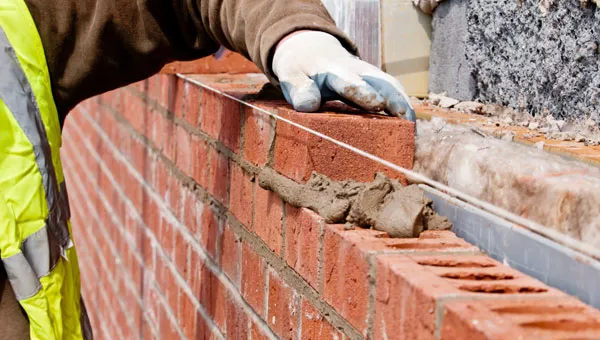Chimney Flashing and Cap Repair: Protect Your Home from Elements
Chimney Flashing and Cap Repair: Protect Your Home from Elements
Blog Article
Unlocking the Tricks of Sustainable Masonry Building And Construction Practices for Eco-Friendly Buildings
Amongst the myriad techniques to environmentally friendly structure, sustainable masonry construction stands out as a tried and true and durable method that holds a wealth of untapped potential. From the selection of products to cutting-edge construction strategies, the tricks to achieving sustainability within stonework building are multifaceted and appealing.
Benefits of Sustainable Stonework Building
Accepting sustainable masonry building practices not just minimizes environmental influence yet additionally offers long-term economic benefits to contractors and areas. By utilizing materials like recycled blocks, obstructs, and stones, contractors can substantially lower the carbon footprint of their projects while promoting resource performance. Furthermore, lasting masonry construction strategies, such as proper insulation and thermal mass residential properties, can enhance energy efficiency within structures, causing lowered functional costs gradually.
In addition, the durability and resilience of stonework frameworks contribute to long-term financial advantages. Structures built utilizing lasting masonry methods typically require less maintenance and repair service, equating to cost savings for builders and homeowner. The longevity of stonework products additionally makes certain that frameworks remain secure and protected, decreasing the requirement for regular improvements or substitutes.
Eco-Friendly Masonry Materials
Making use of environment-friendly stonework materials is a critical step in the direction of enhancing the sustainability of building and construction techniques and decreasing ecological impact while taking full advantage of long-term economic benefits. Lasting masonry products are sourced, created, and used in a manner that lowers total environmental effect. Materials such as recycled bricks, reclaimed rock, and lasting cinder block are coming to be progressively popular choices for eco-conscious home builders. Recycled blocks, as an example, not just divert waste from landfills yet additionally call for much less power to produce compared to new bricks. Recovered stone supplies a special aesthetic appeal while lowering the requirement for new quarrying. Sustainable concrete obstructs include recycled accumulations and might include better insulation homes, adding to energy performance in structures.
In addition, natural products like adobe, rammed earth, and straw bales provide outstanding thermal mass buildings, reducing the need for home heating and cooling energy. These products are usually in your area offered, promoting local economic climates and lowering transportation-related carbon emissions. By picking environmentally friendly stonework materials, building jobs can significantly reduce their ecological footprint and add to the creation of much healthier, much more sustainable developed settings.
Energy-Efficient Masonry Techniques
Power efficiency plays a critical duty in improving the sustainability of stonework building and construction techniques. One crucial energy-efficient masonry technique is the usage of thermal mass, which read this article includes incorporating thick materials like concrete or block into the building's structure to take in and save heat.

Advancements in Sustainable Masonry
Current advancements in lasting masonry practices have actually produced innovative strategies that are reshaping the building sector. One such technology is the development of self-healing concrete, which utilizes microorganisms installed within the concrete to recover cracks autonomously. This breakthrough not just decreases upkeep costs however additionally improves the longevity of stonework structures, adding to their sustainability.
An additional remarkable innovation is using recycled aggregates in stonework building and construction - masonry contractor. By incorporating products such as smashed ceramic waste or recycled glass into concrete mixes, builders can reduce the ecological impact of more information building tasks while preserving structural honesty. This practice not only draws away waste from land fills however also saves all-natural sources, making it a crucial advancement in sustainable masonry building
Moreover, the integration of electronic style tools, such as Structure Information Modeling (BIM), is changing the way stonework structures are intended and constructed. BIM enables even more accurate estimations, decreased material wastage, and improved power performance, ultimately causing even more lasting structure techniques. These developments jointly signify an encouraging future for sustainable stonework building and construction in the age of eco-friendly structures.
Future Trends in Stonework Sustainability
With the innovative strides made in lasting stonework practices, the future patterns in stonework sustainability are positioned to further change the construction sector. Among the essential trends shaping the future of masonry sustainability is the raised integration of innovation. Advancements such as Building Info Modeling (BIM) and online fact simulations are being used to optimize stonework helpful hints building and construction procedures, bring about minimized product waste and enhanced energy performance in structures.
Furthermore, the development of novel sustainable products is readied to play a substantial role in improving the eco-friendliness of stonework construction. masonry contractor. Advancements like self-healing concrete, recycled aggregates, and bio-based binders are acquiring grip for their capability to reduce ecological influence while keeping architectural honesty

Verdict
In verdict, lasting masonry building and construction techniques use countless advantages for green buildings. masonry contractor. Innovations in lasting masonry are continually being established to better enhance the ecological performance of structures.
Report this page